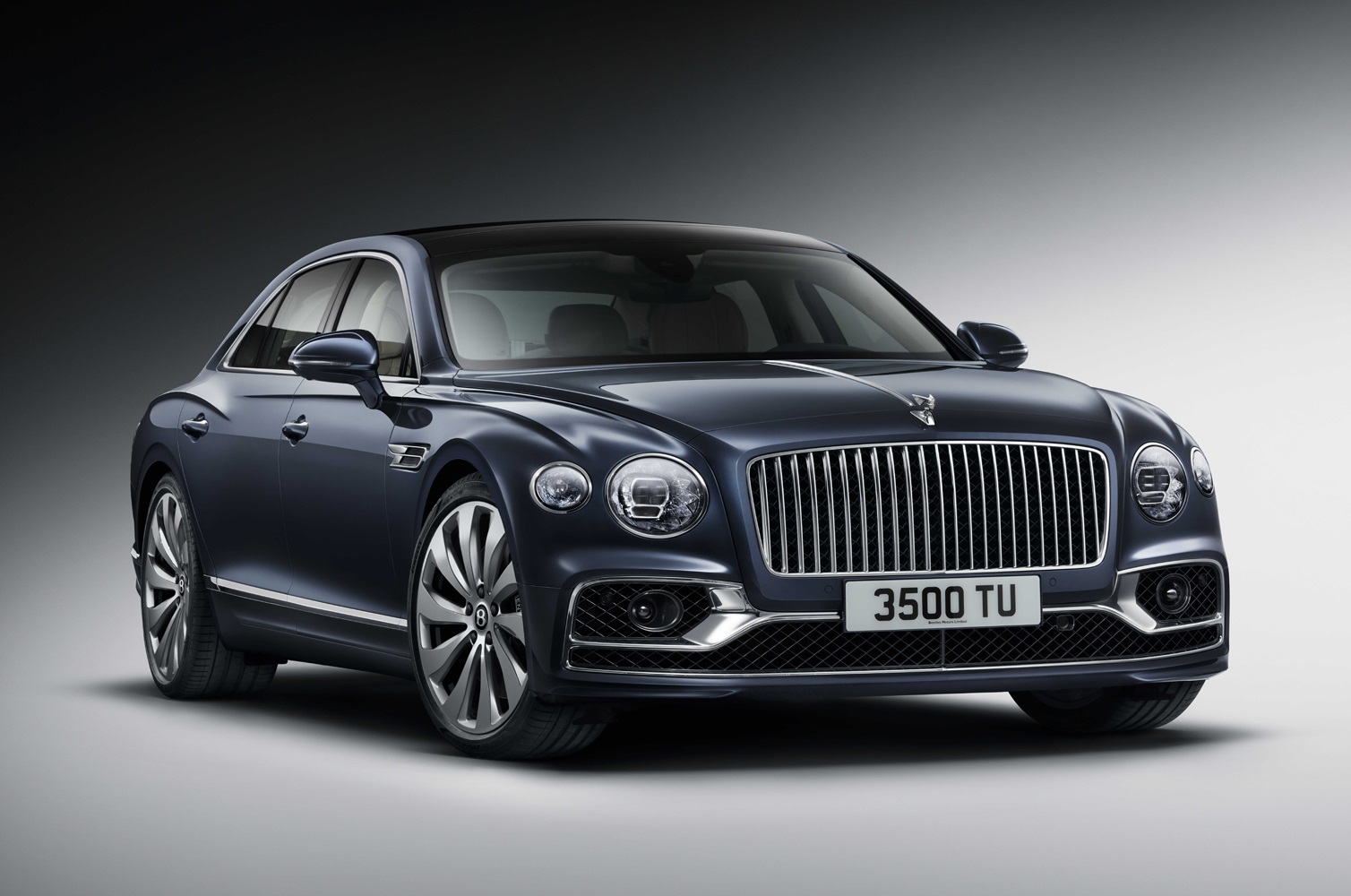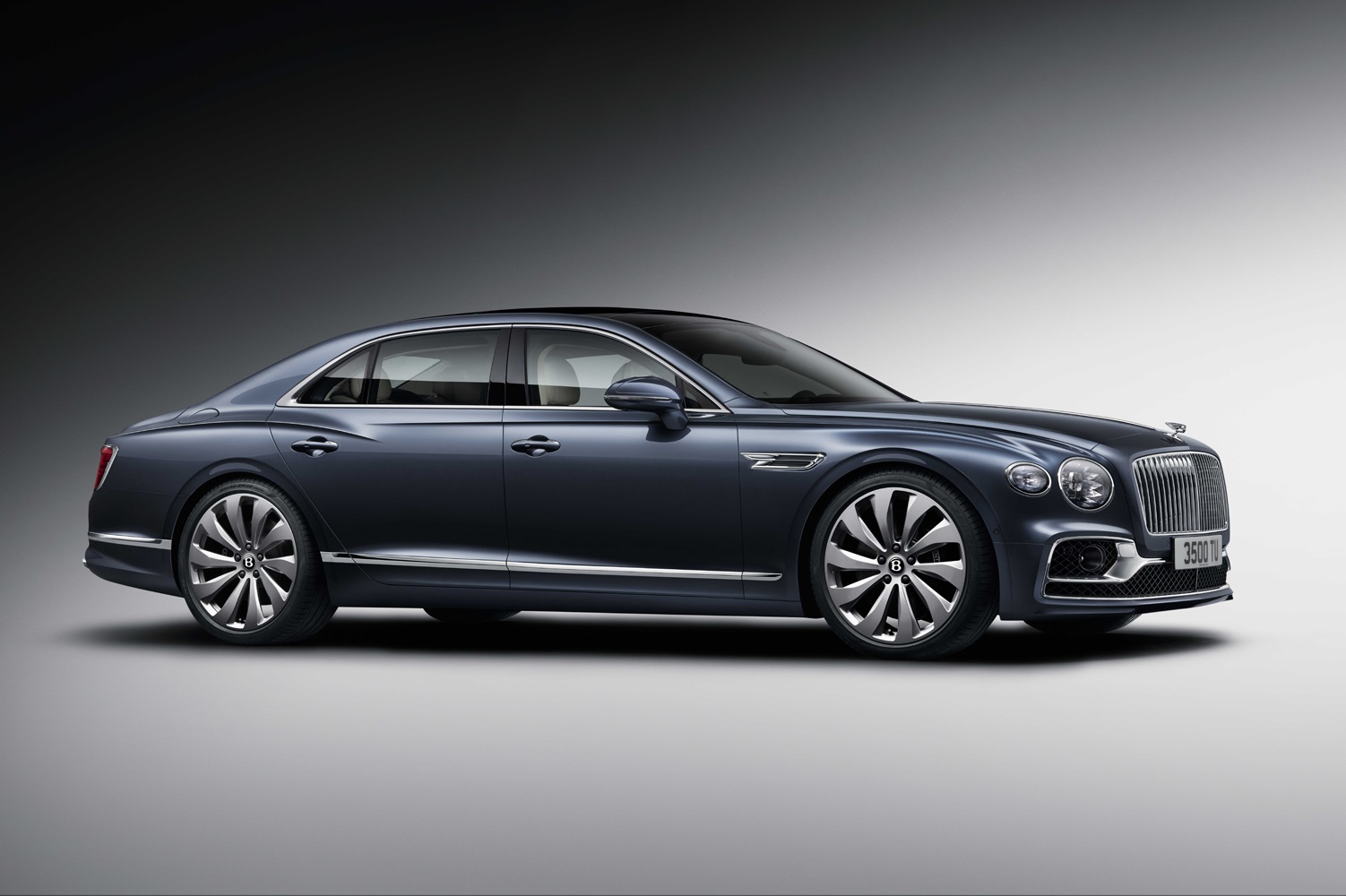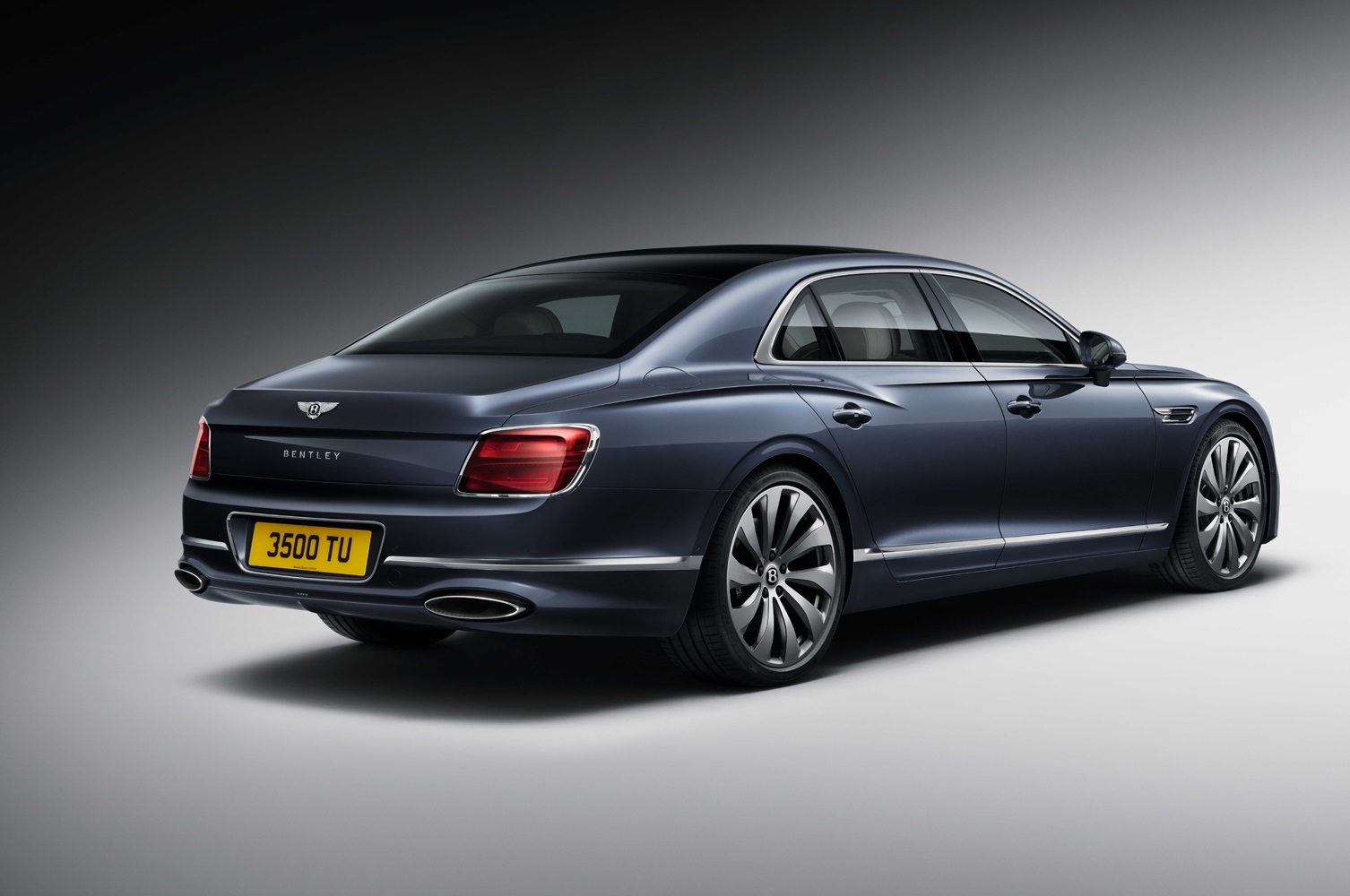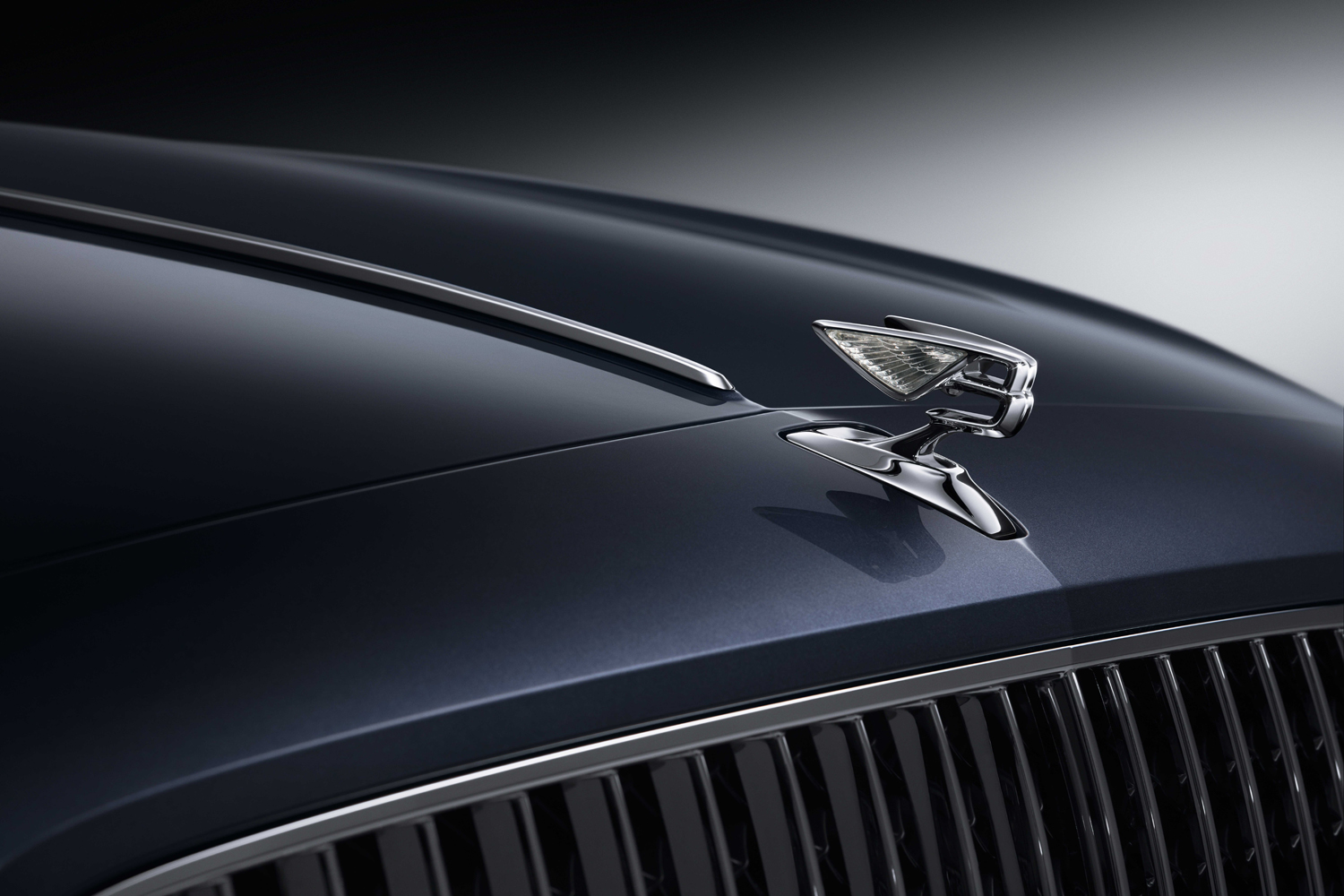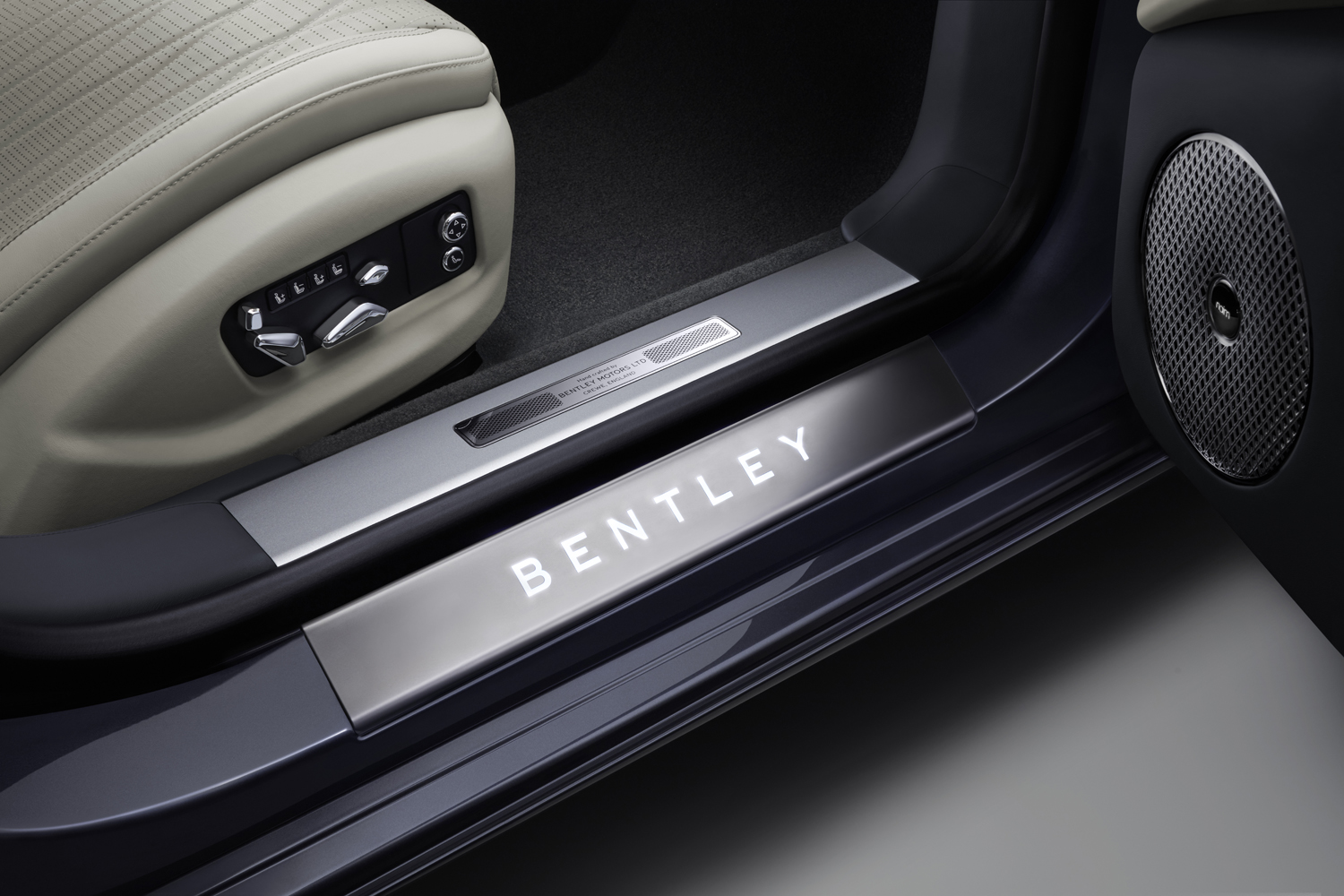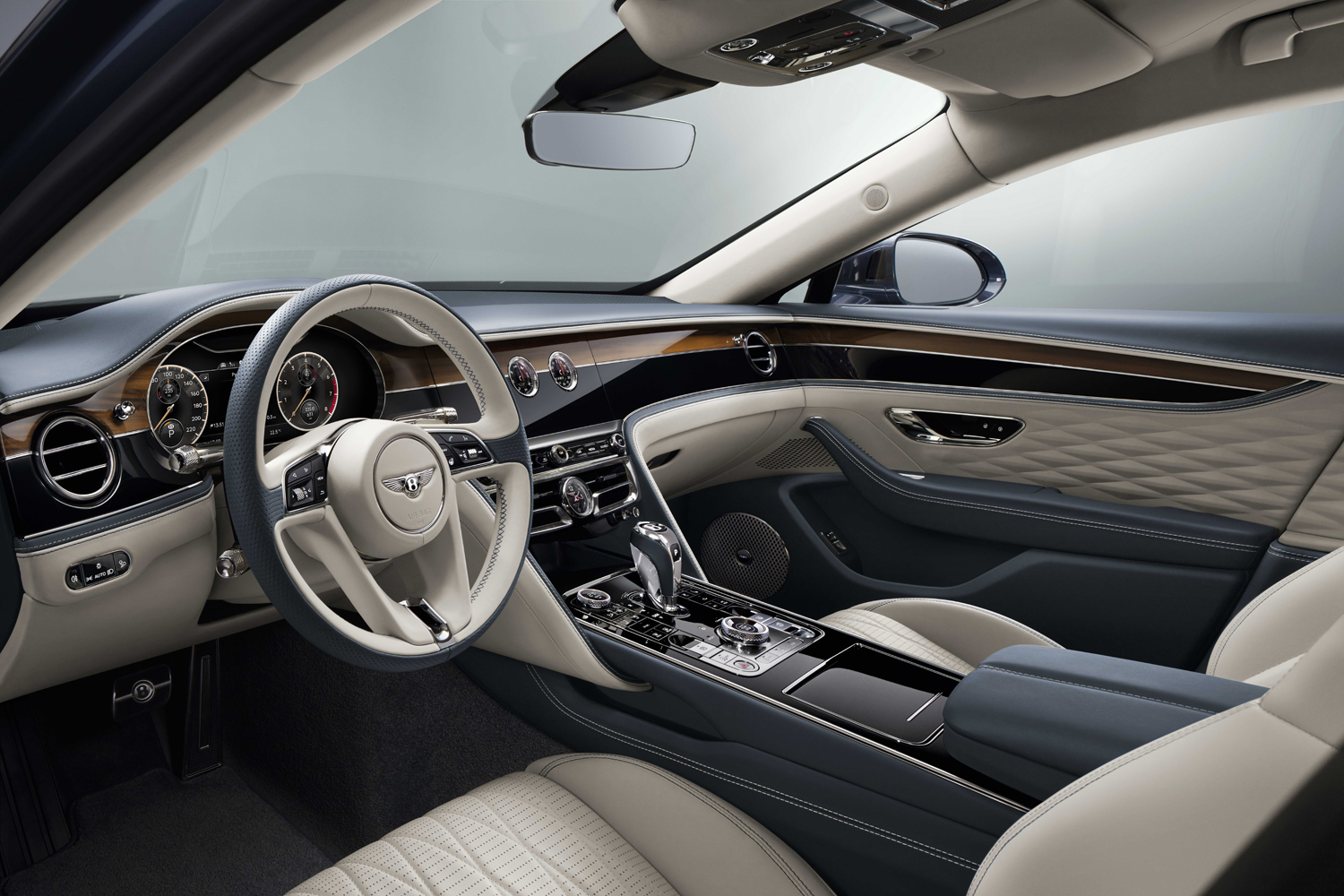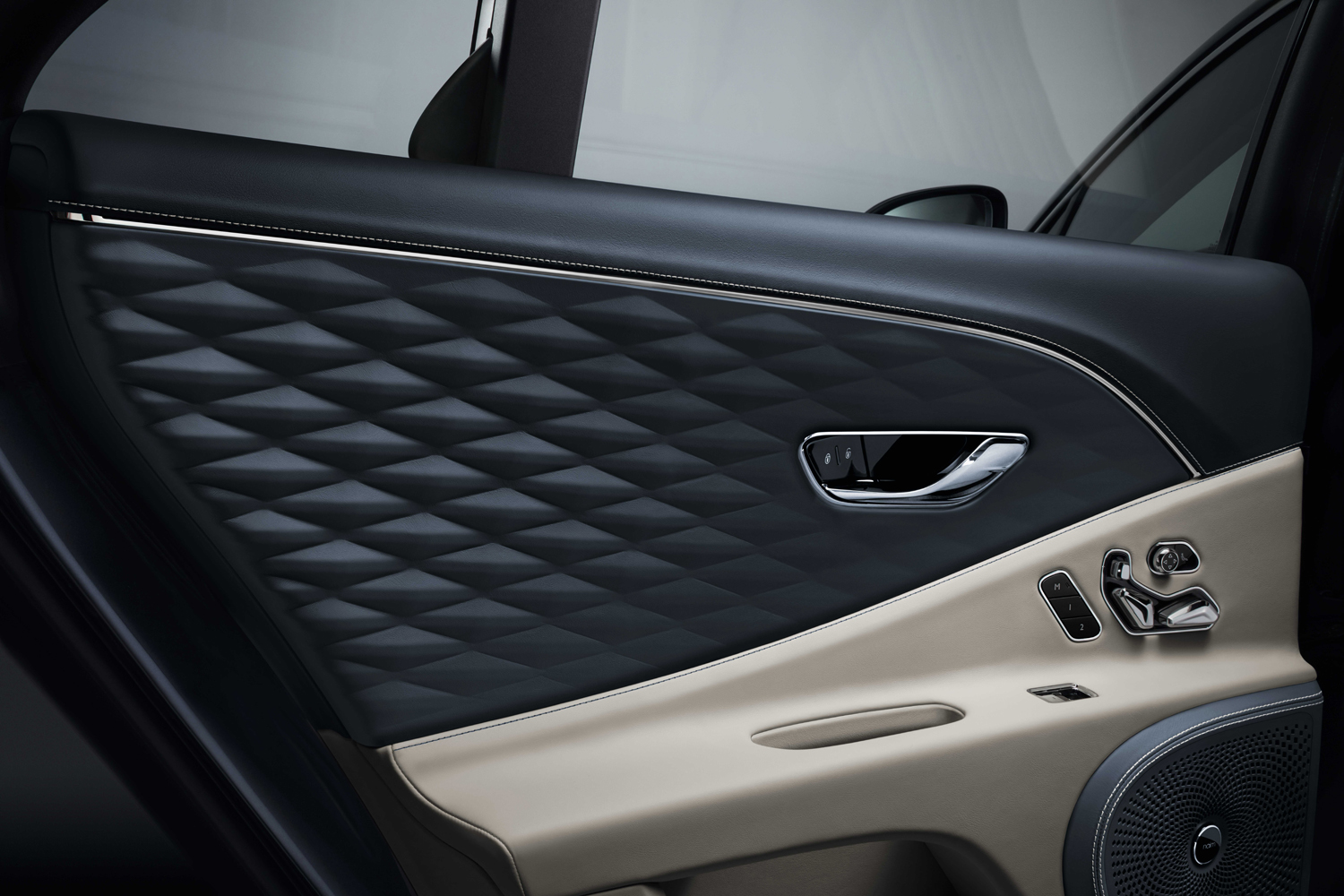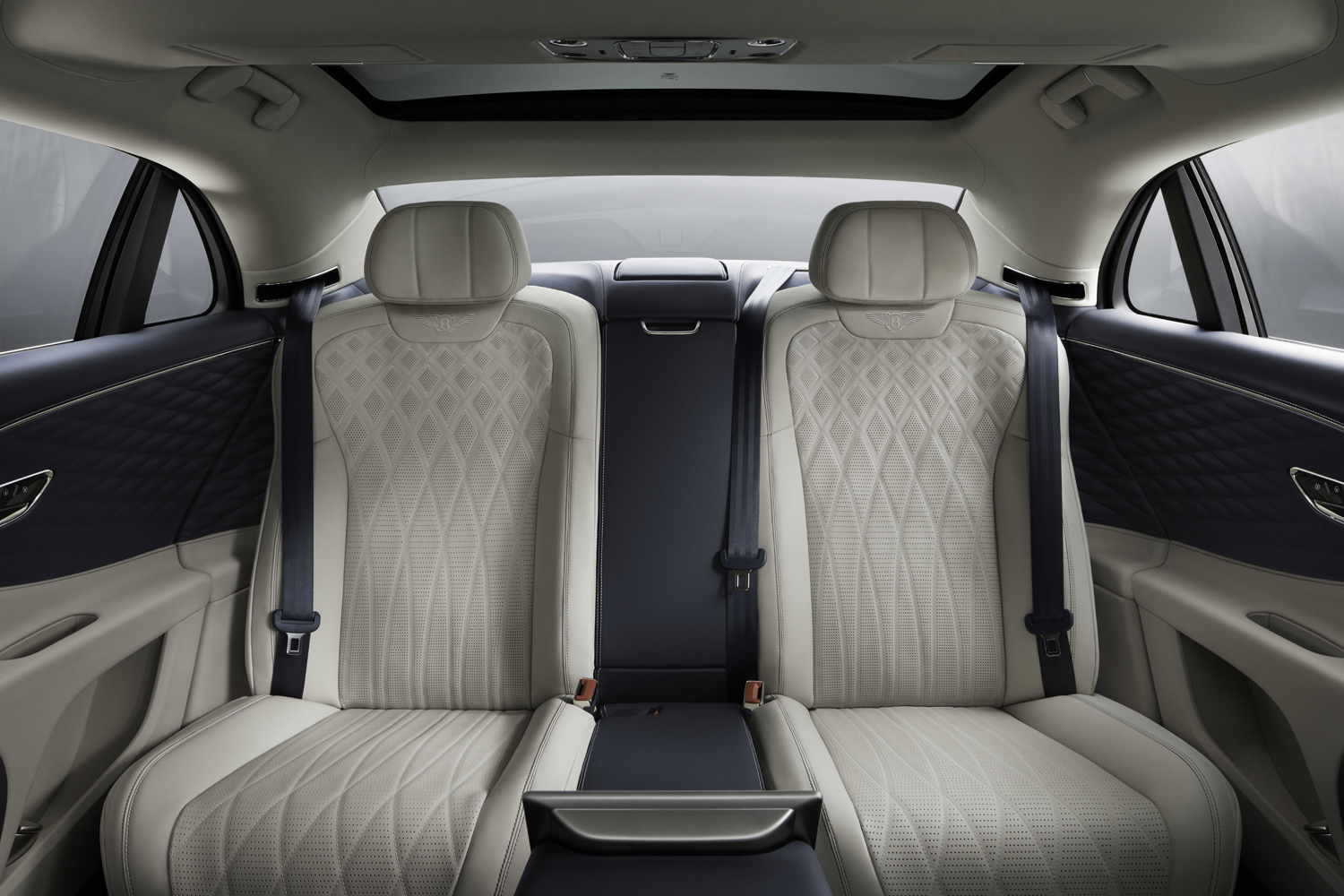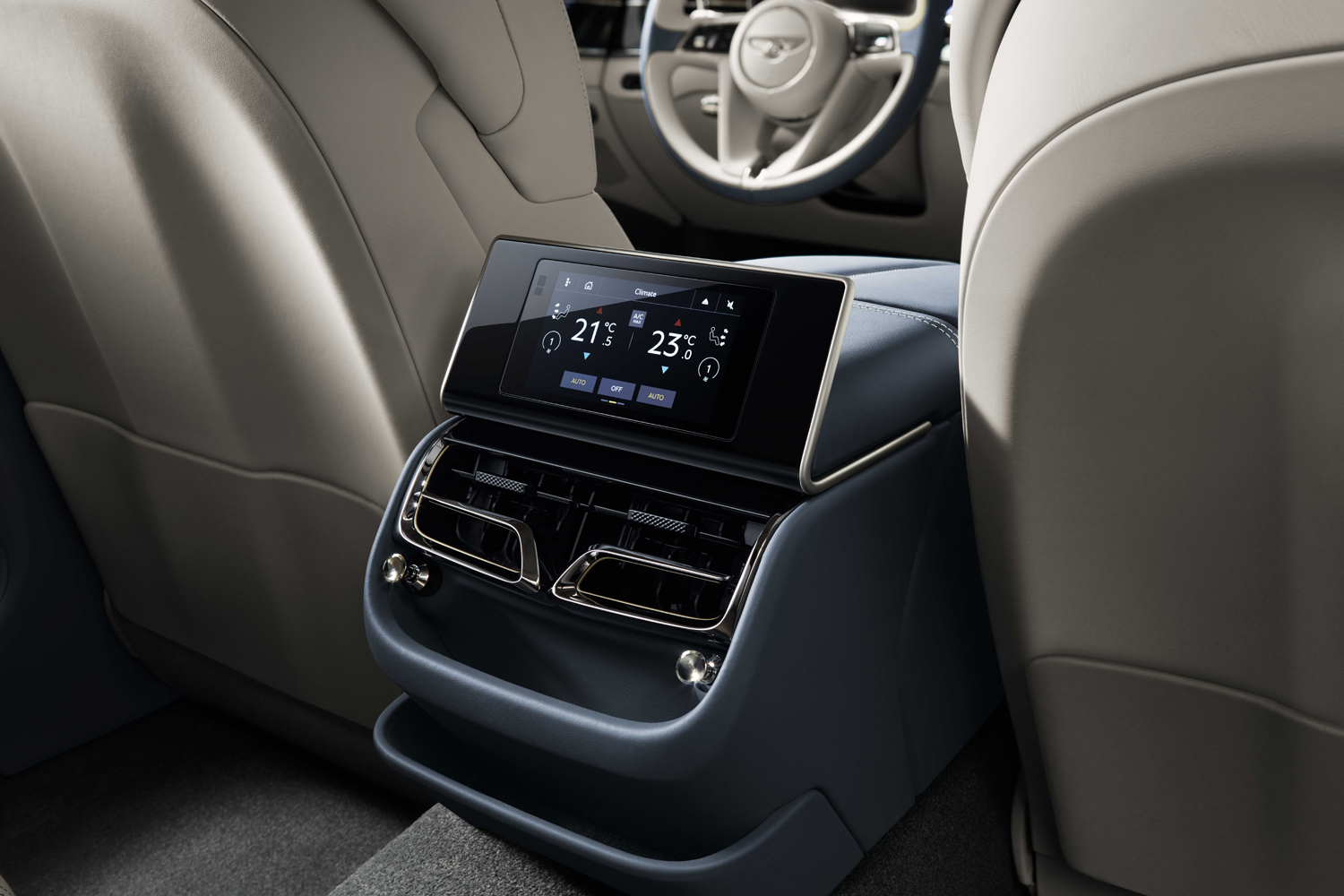If you made some money off the Uber IPO and are looking for a fancy new car to drive or get driven around in, you’ve started your search at the right time. Bentley has unveiled the new 2020 Flying Spur, a luxurious sedan positioned below the flagship Mulsanne in its lineup.
While it’s still stately, the 2020 Flying Spur wears a more aggressive design than its predecessor. Its front end is characterized by a massive grille that will surely collect its share of bugs, and the shape of the headlights reminds us of the Continental GT, which the sedan is based on. When it’s viewed from the side, carefully placed character lines break up its visual mass. The low, sloping roofline flows into a tall trunk lid and a pair of rectangular, chrome-framed rear lights with B-shaped insert.
To our eyes, the Flying Spur looks more svelte than its predecessors even though its wheelbase is about five inches longer. That’s a neat design trick, but the coolest part of the exterior is the Flying B hood ornament that electronically retracts beneath the grille when the car is parked.
Bentley makes the Flying Spur’s cabin by hand using natural, authentic materials. If a part looks like wood, it is; if it looks like aluminum, it is. Customers consequently have countless ways to customize the Flying Spur’s interior. The list of options includes different wood veneers, several types of leather, and many different ways to stitch it together. Two USB ports and a wireless phone charger come standard.
The dashboard is dominated by Bentley’s rotating center console. Inspired by Toblerone chocolate, according to the firm’s former research and development boss, it’s a three-sided part that lets the driver choose between a 12.3-inch touchscreen for the infotainment system, heritage-laced analog gauges, and a seamless wood veneer that blends in with the rest of the dashboard. We loved this feature when we spent time behind the wheel of the Continental GT Convertible.
The long hood hides a 6.0-liter W12 engine twin-turbocharged to 626 horsepower and 664 pound-feet of torque. The mighty 12-cylinder spins the four wheels through an eight-speed, dual-clutch automatic transmission. The Flying Spur overcomes its not-insignificant 5,500-pound mass to hit 60 mph from a stop in 3.7 seconds. It keeps going until the speedometer shows 207 mph, though that speed can only be reached in sixth gear because seventh and eighth are overdrive gears.
The Flying Spur has always been quick, but Bentley promises the newest version of the nameplate offers more dynamic handling than before. The all-wheel drive system channels the engine’s torque to the rear wheels in normal driving conditions, and it only engages the front axle when extra traction is needed. And, the model stands out as the first Bentley with all-wheel steering, which turns the rear wheels in the same direction as the front ones at high speeds to increase stability, and in the opposite direction at low speeds to make the big sedan more maneuverable.
The Flying Spur also benefits from the Bentley Dynamic Ride technology used in the Continental GT and the Bentayga SUV. It uses a 48-volt electrical system and electronic actuators to actively tug at the body under cornering, improving handling with resorting to super-firm dampers, which would compromise ride quality.
The 2020 Bentley Flying Spur will go on sale in the coming weeks. Pricing hasn’t been released yet, but its target audience likely doesn’t need to ask. Its rivals will include the Rolls-Royce Ghost, and the full-fat, Maybach-badged variants of the Mercedes-Benz S-Class. Audi’s upcoming super-A8 will join the trio when it makes its official debut.
Updated on June 11, 2019: Added full information about the Flying Spur.
Editors' Recommendations
- Cadillac aims to balance its lineup with a small electric SUV
- Remember that burning ship carrying luxury cars? It sank
- 2022 Infiniti QX60 aims to make school runs more stylish
- Bentley’s first electric car could use cutting-edge solid-state batteries
- You can now use AR on your phone to explore the Bentley you can’t afford
